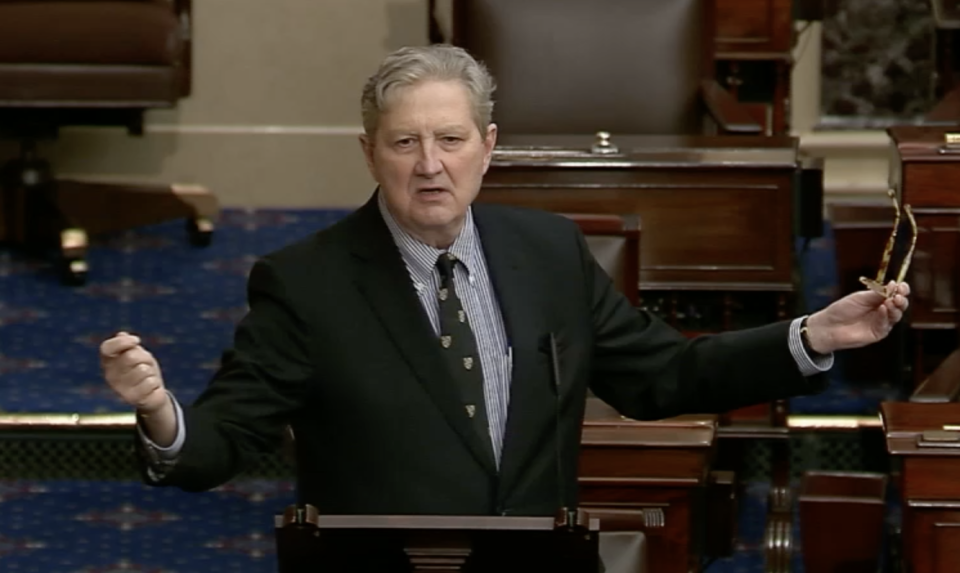
Baldone: BP’s attempt to quell future claims is ‘horrible’
July 19, 2011
Floyd Toups
July 21, 2011Coin collectors and dealers seek the unusual. They know the difference between hard currency and folding money, what is historic or just old, and if those silver dollars grandma said would one day be worth a lot are really of any value other than sentimentality.
While serious collectors and dealers fault suggestive advertising and misinformation, that make many people believe they will become wealthy because they found an old coin among their spare change, experts confirm that for collecting purposes there are some pieces worth far more than their face value. They also stress that real worth carries a historic element and the thrill of holding something unusual.
“The odds of having 1943 steel [penny] set are very high,” International Coin Collectors Association specialist Tim Brown said last week during that organization’s buying campaign at the Quality Hotel in Houma. “They made like a billion of these. So it is like the $2 bill. It is not one that is going to be a real big winner. But if they had a copper [penny] from 1943, it could be a big winner.”
Brown said that the value of collectable coins is “all over the board” in terms of prices buyers will offer. One of the most popular collectable U.S. coins is the Morgan silver dollar. George T. Morgan designed the well-recognized piece. It was minted and circulated between 1878 and 1904 then made a limited appearance again in 1921.
Among the rarer items Brown had available for collectors was a $1 note from 1962 with the image of Salmon P. Chase, U.S. Secretary of the Treasury under Abraham Lincoln, on it. “That is about a $250 note,” Brown said. “If it were in really nice shape it would be in the thousands.”
Retired U.S. Army general and former Nicholls State University psychology professor Gary Whipple grew up in Bourg and now lives in Houma. He is principal of the Bayou Country Coin Club and has been a serious collector since 1975.
“I remember as a kid putting aside a Mercury dime that I had earned digging potatoes for some farmer,” Whipple said of his beginnings in collecting. “It didn’t matter back then that they were 90 percent silver. My mother had a bunch of Morgan dollars and I put a complete date set of Morgan dollars together,” Whipple said. “[Things like that] are how a lot of people get started.”
Whipple said collecting and trading coins as a serious hobby does have significance. “If you have a 1909 SVDB Lincoln set
Serious coin collectors, the experts contend, are those individuals that look beyond face value or a design to turn a quick profit.
Whipple said that the difference between the kind of person who collects as opposed to someone who just hoards is someone who wants to know the history of coins and become educated regarding which coins carry value and why.
“That guy might collect from ancient Greek and Roman coins all the way to early U.S. coins,” Whipple said. “Then there are collector investors. They say, ‘I want to have a collection and leave it to my children and have it be worth more when I die than when I bought it.’ Then you have people in the hobby who are strictly in it for the business. They are investors and dealers.”
As a popular coin for novice or casual collectors, the Morgan silver dollar, depending on condition and rarity, could fetch up to $30 according to calculations by Coinflation.com. While that is a significant in relation to return on investment over its first issuing 133 years ago, it is far from something that would put a child through college or pay for retirement.
“It is way too iffy to count on [collecting] coins as an investment like that,” Brown said. “There are some that can be worth money. You will always have [at least] the value of the gold, silver or copper. Any hobby is worth the investment.”
Brown said that displayed collections tend to be more novelty in terms of interest than serious coin for the hard collector. On the other hand, some casual collectors might have items of value beyond their expectations. “We had one person in here that had seven different gold coins,” he said of an unidentified area patron.
“We are like a middleman that helps people find collectors and dealers,” Brown said of the ICCA. “We have collectors and dealers ready for those items brought in [by the general public]. There is stuff that is not worth much, but there is a lot that is. It’s like a free lottery ticket. You might as well see if it is good. You really never know.”
Brown said the public should also be aware of counterfeit coins sold as replicas of originals. He said that the biggest complaints organizations like his get are from people who have been disappointed that the coins they were told by a relative or friend had great value really did not in terms of what serious buyers and collectors look for.
“Once a week I’ll have somebody say, ‘That’s ridiculous, it should be worth more,'” Brown said. “They saw that on the Internet. There are people who phish on the Internet who say they will sell something for $1 million. But it might be worth only $1. Just because that is what someone will sell it for doesn’t mean that is what it is worth.”
Uninformed holders of what is thought to be rare pieces of currency are often upset because they see something listed to auction at an inflated price and think genuine collectors and buyers are trying to scam them because they are not going to offer that posted amount.
Brown and Whipple warn, for example, against the idea that sets of coins, such as the issuing of state quarters during the past decade, will ever be worth much more than their face value. Whipple said he put sets of the quarters together for his grandchildren, but noted their sentimental value far surpasses any cash they might yield.
“When you look at coins you look at three things,” Whipple said. “First is the date because you can determine from that how many were minted. It doesn’t matter that is it real old. It is how many were made.
“The second thing would be the condition. Then you look at whether or not it is uncirculated. Most uncirculated coins begin at a better price than circulated. The third thing is you have to look at is the grade of the coin,” he continued.
Whipple said that some of the most uncommon coins issued in the United States during the past 235 years are those that were made as tokens by businesses and companies that minted their own coins, which could only be returned at their establishments.
“What happened during the Civil War is that merchants, not having enough currency to make change began printing their own. Civil War tokens were minted [by businesses] and they used these as change [to bring customers back to their stores]. Some of these are in nice shape considering they have been around since 1863,” Whipple said while showing his book of these tokens.
Numismatists, the official term for coin collectors, become fascinated by the unique. Hobo nickels, select 5 cent pieces that were altered by amateur engravers during the Great Depression, can now each carry a value of up to $3,500 depending on the quality of work.
Whipple said that when it comes to collecting, the person interested in this activity should first become knowledgeable about what is involved before purchasing that first coin.
“A lot of people start collecting haphazardly,” Whipple said. “You can put out a lot of money for coins. Buy the book before the coin. Get some knowledge, and if you can, join a coin club where there are other people that have the knowledge and can teach you.”
“There is a large base of collectors,” Brown aid. “I don’t think [collecting] coins will ever go away.”
“Coin collecting is a good wholesome hobby that kids can get involved in,” Whipple said. “But there are more adults.”
Basically, for all serious collectors and dealers, whether they are interested in the basic metal or the history involved with a given piece, their activity is done for the love of money.
Bayou Coin Club Principal Gary Whipple shows some of his favorite rare coins and offers tips on smart collecting by explaining the difference between money with value and what is simply old. MIKE NIXON










